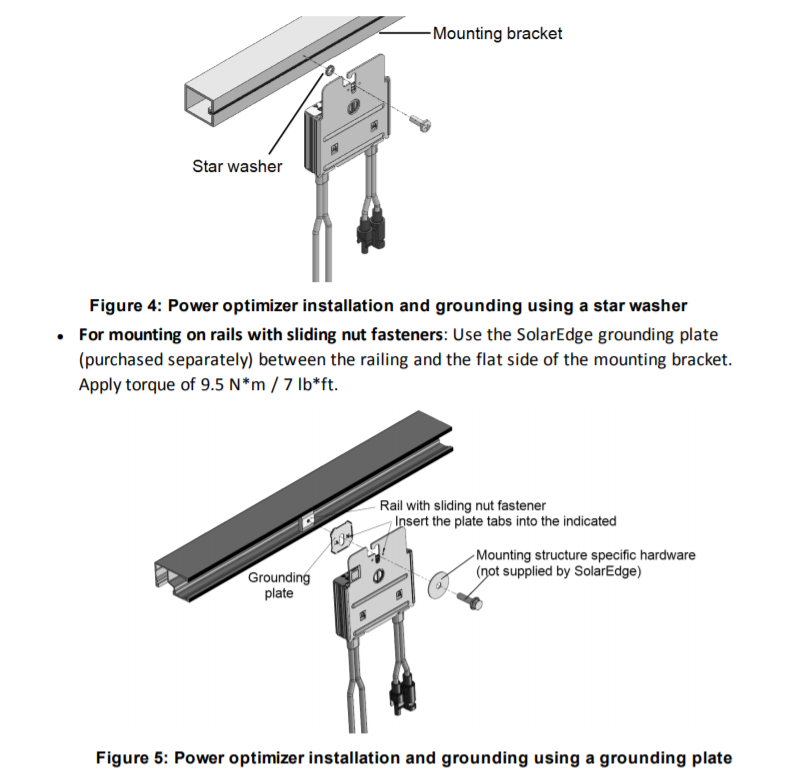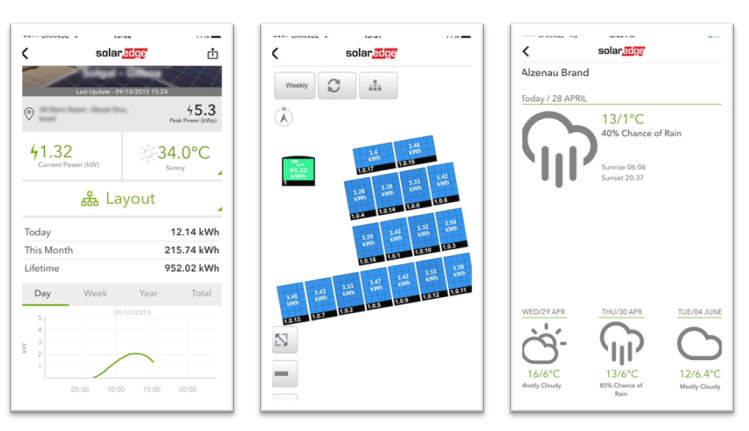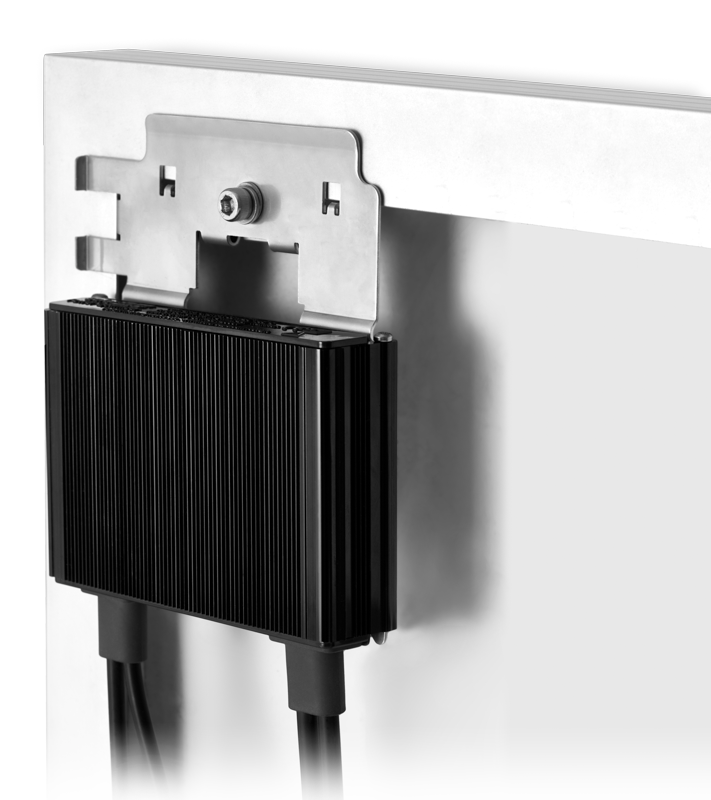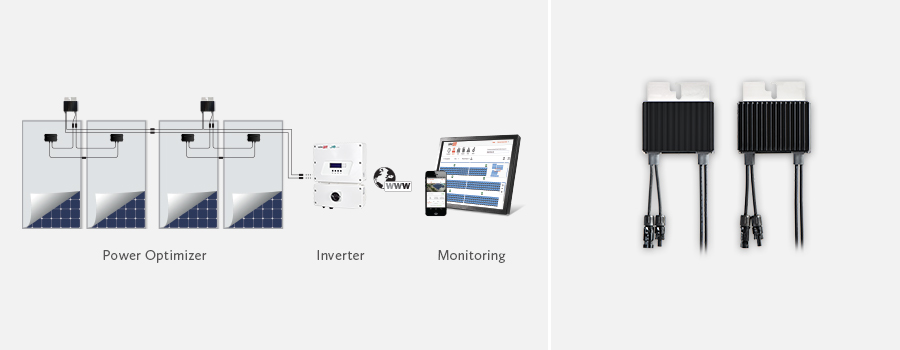 Loading... Please wait...
Loading... Please wait...- Home
- Solaris Blog
- Power Optimizers: Everything You Need to Know
Products
- Heating and Cooling
- Outdoor Living & Patio
- Solar Kits
- Solar Products
- Solar Panels
- Solar Panel Kits
- Solar Generators
- Inverters
- Inverter Monitoring
- Inverter Accessories
- Balance of Systems
- Racking and Mounting
- Rails
- Flashings
- Splice Kits
- Stopper Sleeves
- Conduit Mounts
- Attachments
- Brace Assembly
- Base Mount
- Brackets
- Bolts
- Clamps
- Caps
- L-Feet
- Washers
- Skirt
- Lugs
- Tilt Legs
- Hooks
- Stand-Offs
- Ballast Bay
- Top of Pole Mount
- Side of Pole Mount
- Flush Mount Kits
- Ground Mount Kits
- Roof Mount Kits
- Hardware Packages
- Wire Management
- Batteries
- Battery Accessories
- Charge Controllers
- Tools and Supplies
- View All Products
Power Optimizers: Everything You Need to Know
Posted by Brandi Casey on 10th Apr 2019
Power optimizers connect to SolarEdge inverters to increase efficiency at the point of power generated from the solar modules. The optimizers increase the conversion rate and efficiency for DC to DC energy. SolarEdge's inverter then converts the direct current (DC) energy generated by your solar modules and optimizers to use-able energy in the form of alternating current (AC) energy. Some may argue that the inverter is the most important component of your solar energy system (next to solar panels). The overall efficiency of your inverter in converting power into usable energy plays a big role in how much usable power can be utilized by your system. Power optimizers work to ensure that you are getting the most out of your PV array, which makes them a perfect compliment to compatible string inverters.
Power optimizers work in less than ideal site conditions, (i.e., shading or on a north facing roof), with your panels and inverter to ensure that you are getting the most out of your system. Much like microinverters, they increase the output performance of each module at the individual level - which opens up a range of benefits for system owners. It is important to map out your site conditions in order to pick the most efficient solar energy setup for your unique situation.
Here, in our complete guide for optimizers we will:
- Explain what power optimizers are and how they work
- Help you pick which optimizers you need
- Examine their ability to perform
- Outline their safety features
- Provide installation details
- Explain the differences between power optimizers and microinverters
- Study their lifespan
- Help you decide if they are right for you
How do power optimizers work to improve efficiency?
SolarEdge power optimizers are DC/DC converters which , once installed on solar panels, turns the module into a “smart module”. Optimizers take DC energy, regulates the output of the module and delivers energy to the central inverter for final DC to AC usable energy conversion. The optimizers increase the overall energy output of your PV array by consistently tracking the maximum power point (MPPT) of each individual module in your system. Tracking the modules MPPT increases the efficiency of DC power from the solar cell, and down to the central inverter where that power is converted to usable AC power.
Additionally, power optimizers allow you to monitor the performance of the individual modules in your system through the SolarEdge monitoring platform for quick and easy troubleshooting and maintenance. In summary, optimizers mitigate module mismatch-loss that may be caused by manufacturing tolerance, partial shading, degradation and so on.
Which power optimizers do I need?
We recommend sizing out your inverter and optimizer with the SolarEdge design tool to ensure compatibility between your solar panels to the optimizers. In addition, it is important to remember that you will need one optimizer per solar panel in your residential solar array. Commercial optimizers that are typically installed every two modules. The type of optimizer required is module dependent. The size of optimizer you will need largely follows the wattage rating of the modules themselves (i.e., a 300w panel would likely use the 320w power optimizer). A breakdown can be found below highlighting first single-phase installs (residential and small commercial typically), and three phase installs (commercial) below.
P320-P505 Power Optimizers - Compatible with a wide range of modules
| Module | Module Power | Module Voc | Current | Download | Price |
| P320 | ≤320W | ≤48V | 11A | Specifications | Click Here |
| P340 | ≤340W | ≤48V | 11A | Specifications | N/A |
| P370 | ≤370W | ≤60V | 11A | Specifications | Click Here |
|
P400 |
≤400W | ≤80V | 10.1A | Specifications | Click Here |
| P405 | ≤405W | ≤125V | 10.1A | Specifications | Click Here |
| P505 | ≤505W | ≤83V | 14A | Specifications | N/A |
P730 Commercial Power Optimizers - Commercial solutions, connects two modules per optimizer.
| Model | Module Power | Module Voc | Current | Download | Price |
| P730 | ≤730W | ≤125V | 11A | Specifications | Click Here |
| P800p | ≤800W | ≤83V | 14A | Specifications | Click Here |
| P850 | ≤850W | ≤120V | 12.5A | Specifications | N/A |
| P860 | ≤860W | ≤60V | 22A (11A ea) | Specifications | N/A |
Are power optimizers easy to install?

*Image credit to SolarEdge
Yes, installing optimizers can be done quickly and easily. In addition power optimizers can be installed in any orientation, which makes them extremely versatile. They have to be installed close enough to one another so their cables can be connected. Be sure to account for heat dissipation, SolarEdge recommends at least a one inch clearance between the power optimizer and other surfaces. Maximum and minimum string length varies depending on the power optimizer, inverter and size of your system. *These calculations can be easily accounted for prior to purchase by running your system through SolarEdge's easy to use design tools.
See Here: SolarEdge Power Optimizer Installation Guide
Monitoring can be easily configured through SolarEdge's online monitoring portal and app. Note that to enable monitoring you will need the SolarEdge meter. Monitoring enables technical and financial performance data on one or more installation sites. This feature is beneficial for both installers and homeowners as it gives them deeper level insight to their system. The system allows for both past and present performance information on a module level, and is both intuitive and easy to use. Simply register for monitoring at SolarEdge's site and you're all set to analyze full, comprehensive reports on your system's performance.

*Image Credit to SolarEdge
Will power optimizers work under extreme environmental conditions?
Yes, power optimizers are designed to work in extreme environmental conditions, though with less efficiency than days with good weather. (Read more about adverse weather and solar power efficiency.) Additionally, with their MPPT tracking, your system may perform better on days with adverse weather than systems without either optimizers or microinverters, this is due to their function of improving the overall performance of each module.
Under conditions where there is complete shading over a single module, the power optimizer may temporarily shut down. This will not affect the performance of other optimizers in the string -- as long as the minimum number of unshaded power optimizers in a string are met. If under those conditions fewer than the minimum number of optimizers are connected to unshaded modules, then you must add more modules to the string. This is an important note to plan before your installation. If you know that a portion of your system is exposed to more shading than the other, account for this when sizing out your strings. This will save on future power generation and ensure that your system is working at its maximum efficiency even under less than ideal conditions.
Do I have to use power optimizers with a SolarEdge inverter?
Yes, for all SolarEdge inverters (Single-Phase, HD Wave, StorEdge, and Three Phase.), power optimizers must be used in order for your solar system to perform and report data to the SolarEdge monitoring platform. Compatibility of optimizers across SolarEdge's product line makes determining which optimizer is required for your system easier, and streamlines the design process. As outlined above, there are a few high-watt optimizers that are recommended for commercial applications. These optimizers are typically used in three phase systems with the commercial Three Phase inverters. When designing commercial systems, it is important to have a knowledgeable team and to take the time to put together complete electrical diagrams.
SolarEdge's products work in tandem with one another to deliver the highest level of efficiency possible. It's important to note, there are other string inverter options on the market that do not require power optimizers, (read more about the best inverters to compare), such as the SMA Sunny Boy that may be a more cost-effective option under ideal site conditions. And, of course, Enphase microinverters.
Are there disadvantages to using power optimizers?
Both string inverter systems with power optimizers and microinverter systems will cost more in initial investment in large part due to the additional materials they require. If you have a south facing roof with no shading, then the additional initial cost may not be worth it in the end for you. In this case, installers may elect to use a string inverter that does not require additional components such as those offered from SMA through their Sunny Boy line. Remember that the power optimizers have a higher chance to outlast the inverter, as suggested by their warranties.
SolarEdge Warranty Period: 25 years for the optimizers and 12 years for the inverter respectively
Keep in mind that, to date, all of SolarEdge’s power optimizers have been compatible across their multiple inverter offerings, and there is no indication that this will change in the future. Therefore, you will likely not have to change out your optimizers if the need for a new inverter arises.
Are power optimizers safe to use and install?
Each SolarEdge power optimizer is equipped with the SafeDC feature, which is designed to automatically reduce solar panels’ DC voltage to a safe level in the event of inverter or grid power shutdowns. * Note that this safety feature does not kick-in in the event that you are connected to a StorEdge hybrid inverter that is operating in backup mode . Power optimizers include a safety voltage function that automatically reduces the output of each power optimizer to 1VDC in the following cases:
- During fault conditions
- Disconnection between modules and the optimizer
- The inverters ON/OFF switch is turned OFF
- The Safety Switch is turned OFF
- And when the inverter's AC breaker is turned OFF
Additionally, there are a number of options for grounding depending on your racking components and city regulations. To learn more about grounding SolarEdge optimizers watch the video below.
*Watch SolarEdge's video on grounding power optimizers
SolarEdge inverters and optimizers are NEC 2017 ready, by providing “ an integrated solution for PV Rapid Shutdown System (PVRSS) 2019. The new provision, specifies that conductors within the array’s 1ft boundary are limited to 80 V or less within 30 seconds of rapid shutdown ”. This ensures not only safety but general compliance - particularly in California where the provision first originated. You can be sure that your system will adhere to any updated electrical provision with SolarEdge.
What is the difference between power optimizers and microinverters?
There are a couple of similarities between optimizers and microinverters. The first is they that both monitor the performance at the individual module level, rather than reporting on the performance of the system as a whole exclusively. Individual panel monitoring offers more detailed information on your system that can be helpful in improving panel efficiency, troubleshooting and more.
The second is that both offer solutions for complex roofs and improved performance under shaded conditions. Shading is particularly important as an under-performing module may make your entire system lag in efficiency or stop generating power all together. Both power optimizers and microinverters address this issue with ease.
Despite their similarities, however, there are a few noteworthy differences.
- First, unlike microinverters that convert DC to AC power at the site of the module, optimizers “condition” DC to DC energy and send it to the central inverter - which then finishes the conversion process.
- Second, in today's market, the cost of power optimizers typically tends to be less expensive than microinverters. This, of course, is takes into account the total cost of an Enphase microinverter system versus a SolarEdge with power optimizer inverter system.
- Third, because optimizers are tied to a central inverter, systems are harder to scale over time than microinverter systems. If you plan on installing half of an 8kW array (4kW) then adding the other 4kW in the future, microinverters are recommended. This is because a 7.6kW inverter will under-perform with only 4kW of power generation and may not be able to perform at all under the low energy conditions. Microinverters avoid this problem because of how they are installed and where DC and AC power is converted.
- Fourth, although microinverters need maintenance, they are less likely to affect the performance of your system than a SolarEdge optimizer system. If an optimizer fails then it is likely that the central inverter will be affected while repairs are underway.
- Finally, due to the SolarEdge’s hybrid battery inverter being compatible with the LG Chem battery, optimizers offer battery solutions that microinverters currently cannot.
Read about: Understanding Lithium-Ion Batteries
When choosing between microinverters and power optimizers, it is important to consider your site conditions and what your plans are for maintenance, power generation and system expansions are before settling on either option. As outlined above, both solutions have pros and cons that largely affect long-term power generation and efficiency from your solar array.
What is the warranty period on SolarEdge power optimizers?
Like standard solar panel warranty periods, SolarEdge optimizers come with a 25-year warranty. It is important to note that the central string inverters currently available from SolarEdge have a 12-year warranty, which means that the central inverter will need to be changed out at some point during the life-time of the optimizers. Due to the fact that SolarEdge optimizers are likely to remain compatible with new and updated inverter models in the future, this means you will not need to swap out optimizers when it comes time for a new inverter. However, it is worth noting, and should be included in your ROI calculations and future planning for your solar energy system.
See Here: SolarEdge Optimizer Warranty
Are SolarEdge power optimizers worth it?
Short answer: Yes, absolutely. The reality is: SolarEdge inverters with power optimizers are one of our most common system inverter configurations for both residential and commercial arrays. If you have a site with shading, or simply want a more efficient system, then power optimizers are a great option for you. If you have a south facing roof, with low chance of cloudy days or shading, the additional cost may be unwarranted (although, this is mandatory with a SolarEdge inverter).
Ultimately, if you decide on using another central inverter, you will not have individual module monitoring which you may desire in the future. The initial cost may be offset by the quicker return on investment over time due to consistent increased efficiency over time. SolarEdge power optimizers are likely a worthwhile choice for your solar energy system, and will continue to be for years to come.





